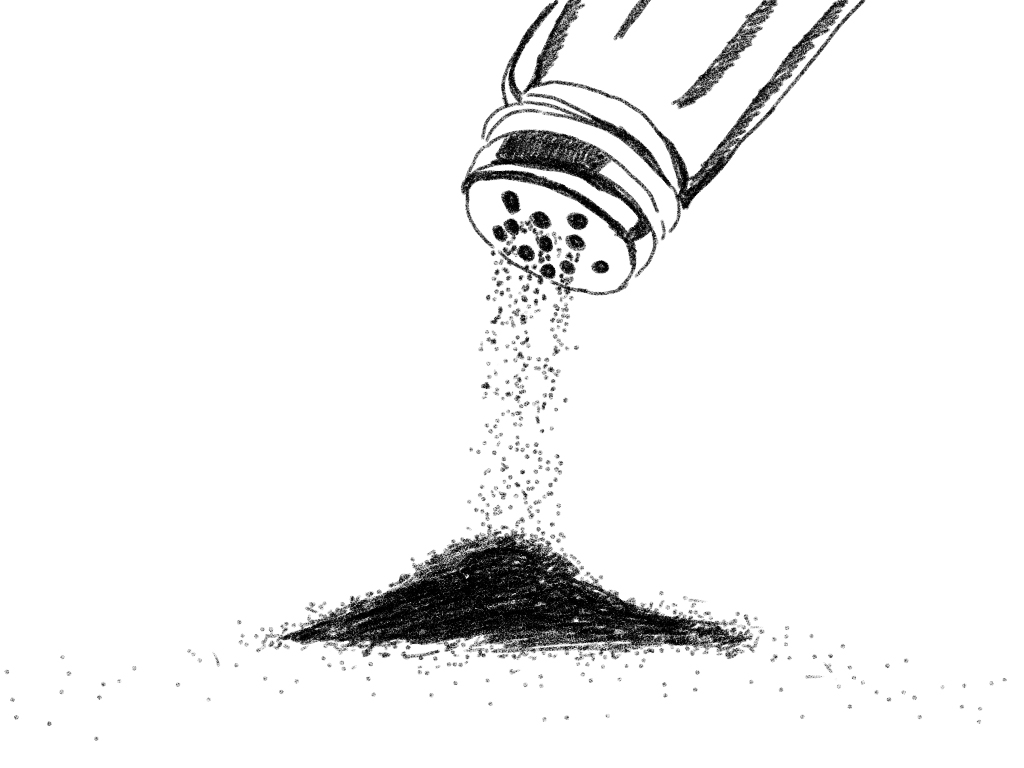Cultural Significance of Salt in South India
Teaches Anthropology at Visva-Bharathi University, Santiniketan.
While I was conducting fieldwork among the Newah community of Nepal in Kathmandu valley, one day my co-tenant rushed into my room and asked me how much salt I had left in my kitchen. His question took me by surprise as I was unaware of the context. So I kept a question mark on my face. He further asked if I had enough salt to last for another month or two. I said yes. He then asked me to go to the local grocery shop and buy a salt packet on his behalf. I was unsure why he was asking this; nonetheless, I went to the local shop only to find that other villagers were waiting to buy a salt packet.
When I asked the grocer what all the fuss is about, he told me that truckers in India are protesting the fuel hike, and the valley is going to face an essential commodities shortage for the coming weeks. The grocers came up with a rule of rationing one packet of salt for each family, and my co-tenant had already bought his share of the salt packet, and he was panic buying through me. His panic was justified as salt is very important both culturally and biologically. Or try eating your food for a day without any salt in it. Newah, who grows almost everything they eat, could not produce salt as Nepal is landlocked.
This incident made me realize that salt has been taken for granted in most of our cultures and societies in India, maybe because it is easily accessible due to the large manufacturing and many companies involved in salt production. But salt was a rare commodity even before just 20 years ago. I remember following my mom when she went to buy salt from a bullock cart that used to come once in a month or so to our village. When a commodity is so rare, yet it is so significant in people’s lives, the commodity is given a special place culturally. Salt can be surely categorized as one such commodity.
La gabelle, a tax on salt consumption by the commoners, led to the French revolution of 1789. In India, Gandhiji used Salt satyagraha to mobilize masses against the British, and the historic march to Dandi brought the British to their knees. Across the cultures, salt also figures itself in various religious references and rituals that continue to date. Fiction works such as Game of thrones drawing from reality also emphasized the importance of sharing salt and bread in the red wedding episode. Salt flashes before us in various forms, such as old sayings, mythologies, fiction, religion, and popular social movements.
When I talked to my mother, her frequent reference to salt made me realize that salt is culturally significant, yet it doesn’t warrant the attention it deserves. As an anthropologist, it intrigued me to understand a culture from the reference to salt and thus attempt to understand my own culture, at least in its periphery. Most of the following observations come from Telugu and Tamil cultures which I associate myself with.
Salt as the personification of goddess Lakshmi
Salt is considered as goddess Lakshmi. As Lakshmi and Vishnu reside in the pal kadal (Sea of milk, abode of Vishnu) and as salt (at least the majority) is also extracted from the sea, Tamils perceive salt as Lakshmi.
Before the rise of a large number of grocery shops, it was a common practice to reach out to your neighbours if you ran out of any essential items in your kitchen. However, it is prohibited to ask or give salt in exchange (uppu kadana kekavun koodadhu or kudakavu koodadhu).
There are several cultural restrictions, such as the container used to store salt is not supposed to be emptied completely. Therefore, families should ensure that they are refilling the salt before they completely run out of it. My mom justified that if the salt container is empty, the Lakshmi or wealth will go out of the house.
Traditionally, women were denied the right to property. However, owing to the cross-cousin marriages and the unique relationship between the brothers and sisters, when the married out daughters visit their maternal home, they can stake claim over the things in her maternal home. The excess oil or coconuts or grains are generally given to the married out daughter when she sets to start out at her in-laws’ house. However, it is believed that a married out daughter cannot take salt from the mother’s house. It is believed that the daughter is considered as Lakshmi too, and it would bring absolute poverty to the maternal house if she takes the salt too.
It is also believed that one cannot exchange salt directly from one hand to the other. Even if one of your family members requests salt while eating their food, you should not hand over the salt from your hand to theirs. Keeping the salt container down is advised, allowing the others to take the salt for themselves. Handing over the salt from one hand to the other will bring rifts between the members involved in the exchange.
Salt reference in inculcating social values
There are many sayings that are used in daily conversation in Tamil to stress the ideal values a person should have in society.
Uppu ittavara ulla alav nenya (don’t forget the ones that has fed you salt). An apparent meaning is that almost all the food items contain salt, and those who offered you food should not be forgotten, and you should be able to repay them in kindness. It can also be inferred that you should not think of harming the family/people who have offered you food.
Uppu thinna thanni kudichatha aganu (if you eat salt you will end up drinking water). To warn someone about the inevitable repercussions for their actions.
When someone is not exhibiting a reaction that is expected of that person at that moment or if someone is not angry for the obvious reasons, people use this rhetorical question-Saptla uppu pott dhana sappra!? (You are adding salt to your food, right!?). Salt is also highly equated with aphrodisiac and is one of the main reasons for the sexual activeness among individuals. The rosham and annmai which are roughly translated to angry or masculinity, are generally used against the male members of society.
Salt as a supernatural remedy
In my home, if we happen to complain about a stomach ache or headache or if my mom was feeling unusually sleepy and yawning continuously, my mom used to attribute these characters to the ‘evil eye’ or Dhristi. She immediately asks us to get some rock salt and performs dhristi sutti podradh (removing the evil eye’s impact). When she asks us to get the rock salt to perform this ritual, she addresses the salt as ‘dristi ki suthi podradhu’ in a code word that we understand she is asking for salt. It is also believed that the evil eye cannot be removed if you address the salt as uppu (salt).
When my mom performs this ritual to remove the evil eye, she revolves her hand with a bit of salt in it in front of us and drags her hand from head to toe to ward off the impact of the evil eye. She then throws the salt in her hand, either in water or into the fire from the hearth. It is also believed that if there is dristi the salt will crack and make a louder noise when thrown in the hearth.
Salt as a religious offering
Salt is offered as one of the religious items in the local goddesses temples. People pour salt as a heap and light earthen lamps on top of the salt heap. Though my mom found this to be a recent phenomenon, she insisted that she has seen from her childhood people pouring salt with black peppercorns at the fireplace in our village Mariamman temple.
My mom also told me that in one of the neighbouring villages during the village carnival called yeri tiruvilla, people bag black peppercorn and salt and throw it at the chariot if their wishes come true. People with warts on their skin also throw the bag of salt and peppercorn on the charriot, hoping that they will get rid of them.
It will also bring good luck and prosperity to the house if the family lights an earthen lamp on the small heap of salt in their place of worship.
Salt as a gift
When a couple builds their own house, it is a custom for the relatives to give gifts at the housewarming ceremony. This is popularly called seer varisai. Therefore, the number of plates with various items such as sweets, coconut, clothes and fruits should be gifted to the couple upon their new start. Salt is an item that should be kept in one of the plates as a seer.
Similarly, the bride is given certain household items called as seedhanam. The newlyweds are supposed to feel the cow with the rice barn and salt in one of the vessels given to them as a part of the seedhanam. It is believed that their new life will be kickstarted with auspiciousness.
Salt as a donation
My mom also recalled that the person who sells bangles is invited to come and show and sell bangles to the bride and other members that are attending the marriage. The bangle seller is paid money worth for his bangle, but the bride is expected to donate him rice, pulses and vegetables along with salt and seek blessings from the person selling the bangles.
The salt is also one of the items supposed to be donated to the brahmins for their priestly services.
Salt is omnipresent
Salt is used as a preservative in pickles, an adequate amount of salt added to sambar is believed to stay fresh for a bit longer, salt enhances the taste of your cuisine. Salt is wealthy and equated with Lakshmi. Spilling salt is bad luck. Exchanging salt is unadvised. Salt is gifted and may also perpetuate superstitions or religious beliefs. Salt used to be rare, and people incorporated it into their culture to amplify its significance in their life and food.







